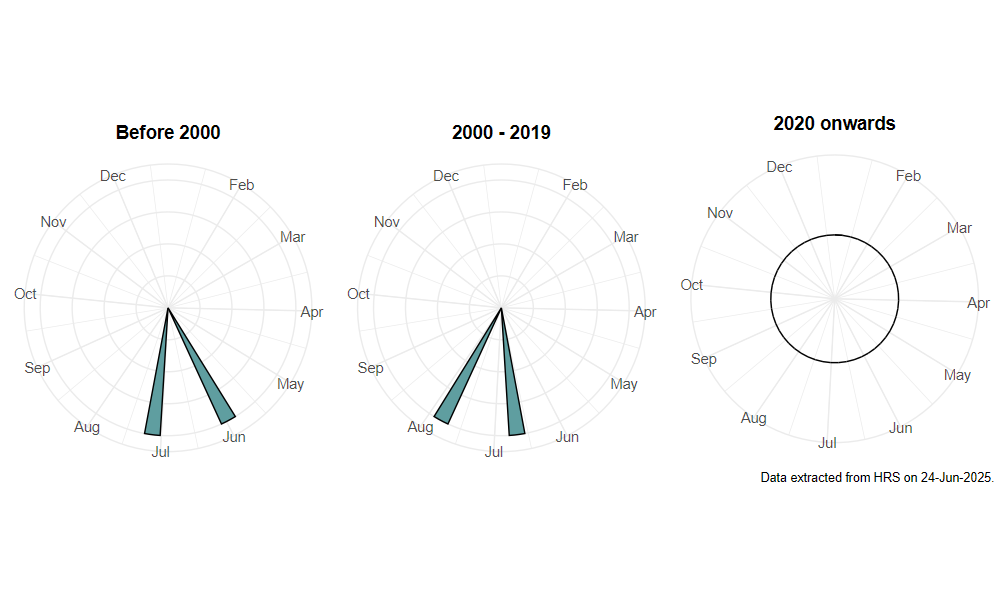Sphaerophoria bankowskae Goeldlin de Tiefenau, 1989
Identification
Identification difficulty = 4. ![]()
![]() according to Ball & Morris, 20241
according to Ball & Morris, 20241
Biology
Larva unknown. Adults have been found in open areas in woods where they will visit low growing flowers such as Tormentil Potentilla erecta.
Flight period
The following plots show the number of unique records per week excluding those reported to be of immature stages.

Status
DATA DEFICIENT - Ball & Morris, 20142.
Distribution
This species was added to the British list from Canfield Hart, North Essex in 1986 by Plant (1990)3, and is so far recorded elsewhere only from a wood in Northamptonshire (Stubbs, 1996)4 and Glen Affric in northern Scotland (Rotheray & Wilkinson, 2010)5. This species is widely recorded in Europe (Speight, 2017)6 lists northern Norway, Sweden, Finland, Denmark, France, Germany, Switzerland and Italy) but it remains poorly known.

-
Ball, S., & Morris, R. (2024). Hoverflies of Britain and Ireland. WILDGuides (3rd ed.). Oxford: Princeton University Press. ↩
-
Ball, S., & Morris, R. (2014). A review of the scarce and threatened flies of Great Britain. Part 6: Syrphidae. ( No. 9). Species status (pp. 1–130). Peterborough: JNCC. ↩
-
Plant, C. (1990). Sphaerophoria bankowskae Goeldlin, 1989 (Syrphidae) recorded in mainland Britain. Dipterists Digest (first series), 3, 32–33. ↩
-
Stubbs, A. (1996). British Hoverflies. Second (revised and enlarged) supplement. Reading: BENHS. ↩
-
Rotheray, G., & Wilkinson, G. (2010). Cheilosia ranunculi Doczkal and Sphaerophoria bankowskae Goeldlin de Tiefenau (Diptera, Syrphidae) new to Scotland. Dipterists Digest (Second Series), 17, 19–22. ↩
-
Speight, M. (2017). Species accounts of European Syrphidae ( No. 97). yrph the Net, the database of European Syrphidae (Diptera) (p. 294). Dublin: Syrph the Net publications. Retrieved from https://pollinators.ie/wordpress/wp-content/uploads/2018/05/StN-2017-Species-Accounts.pdf ↩